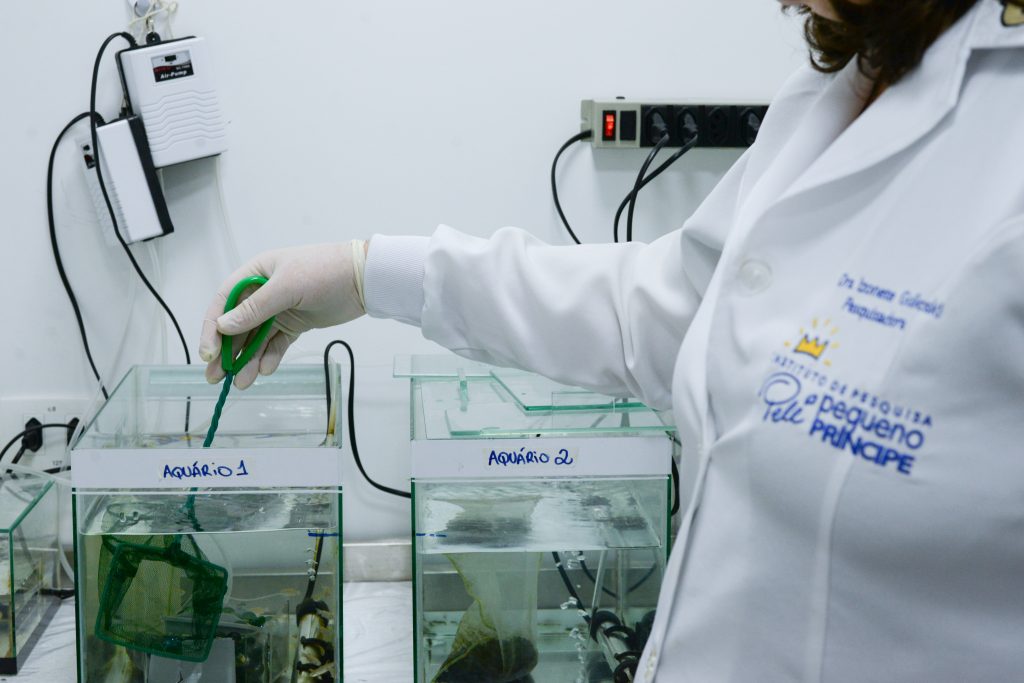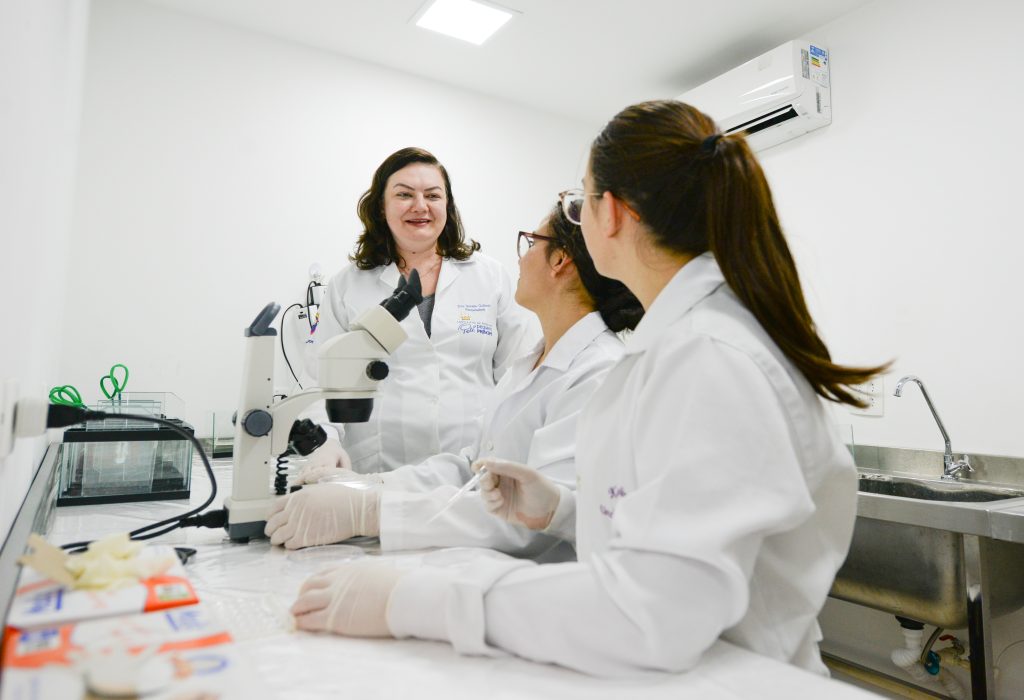Research evaluates the impact of anti-inflammatories on fish health
Article published in “Toxicology Reports” analyzes physiological changes caused by medications in water and warns of environmental risks

Improper disposal of medications has become a global concern due to environmental impacts and consequences for aquatic life. A study by the Pelé Pequeno Príncipe Research Institute (IPP, abbreviation in Portuguese), published in Toxicology Reports, revealed how nonsteroidal anti-inflammatory drugs (NSAIDs) – such as paracetamol, diclofenac, and ibuprofen – can affect fish physiology by interfering with essential antioxidant processes.
In the article “Nonsteroidal anti-inflammatory drugs and oxidative stress biomarkers in fish: A meta-analytic review,” scientists from IPP and from partner institutions analyzed how drugs like diclofenac, paracetamol, and ibuprofen impact oxidative stress – an imbalance between free radical production and the antioxidant defense system in fish.
The effects of these drugs on animals highlight a broader environmental issue: How water becomes contaminated by medications, which can occur through excretion in urine and feces. As a result, these substances end up in the sewage system, generating contaminated effluent. Even after sewage treatment, the medications are not removed. This effluent is discharged into the river. The water we drink is collected from the river and undergoes another treatment process, but the contaminants are still not eliminated.
This raises concerns about public health. Studies suggest that pharmaceutical residues in drinking water can affect liver, kidney, and reproductive functions in both animals and humans. These substances can also act as endocrine disruptors, impairing reproduction in aquatic species and disturbing ecological balance.
One key conclusion of the research is the need to develop strategies to reduce these drugs in oceans, rivers, and lakes. Because NSAIDs are widely used and easily accessible, their release into the environment occurs mainly via sewage and improper disposal. Public awareness and investment in water treatment technology are essential to mitigate these impacts.
“To reduce the presence of medications in water, public awareness about improper disposal of medicines is essential, as is investment in research to develop water treatment strategies that remove these substances,” says Izonete Cristina Guiloski, IPP researcher and professor at Pequeno Príncipe College (FPP, in Portuguese).
Significant changes

Through a review of lab studies evaluating the effects of anti-inflammatories on various fish species, researchers identified significant changes in antioxidant biomarkers – enzymes that defend against cell oxidation – after contact with these drugs. One key finding was that chronic and subchronic exposure to NSAIDs reduced the activity of catalase (CAT), a key enzyme in protecting cells from oxidative damage. In contrast, acute exposure increased the activity of glutathione peroxidase (GPx), a crucial enzyme for removing toxins and harmful substances from cells.
Paracetamol stood out as the drug with the greatest influence on oxidative stress biomarkers. It increased the enzyme superoxide dismutase (SOD) and lipid peroxidation, a process that can damage cells by altering their structure and function. On the other hand, it reduced glutathione S-transferase (GST) activity, impairing the organism’s ability to eliminate toxic substances. Ibuprofen, however, did not show significant changes in the analyzed biomarkers.
The next steps for the research involve refining the biomarkers used to monitor NSAIDs contamination in fish. Scientists hope this will optimize lab resource use and improve the ability to detect environmental damage caused by these medications.
“The publication in the open-access journal Toxicology Reports reinforces the importance of this study by ensuring wide dissemination of results to the scientific community and the general public. The choice of the journal also enhances the study’s credibility, increasing its impact and the spread of knowledge on pharmaceutical risks in the environment,” points out Izonete.
The study was conducted by Izonete Cristina Guiloski; Claudia Sirlene Oliveira (IPP researcher and FPP professor); Henrique Aparecido Laureano (Research Institute statistician); students Meire Ellen Pereira (PhD candidate at IPP/FPP), Juliana Ferreira Silva (Master’s student at IPP/FPP), and Luiz Henrique Zaniolo Justi (undergrad research student at IPP/FPP); and Manuela Santos Santana from the Federal University of Paraná.
Click here to access the article.

